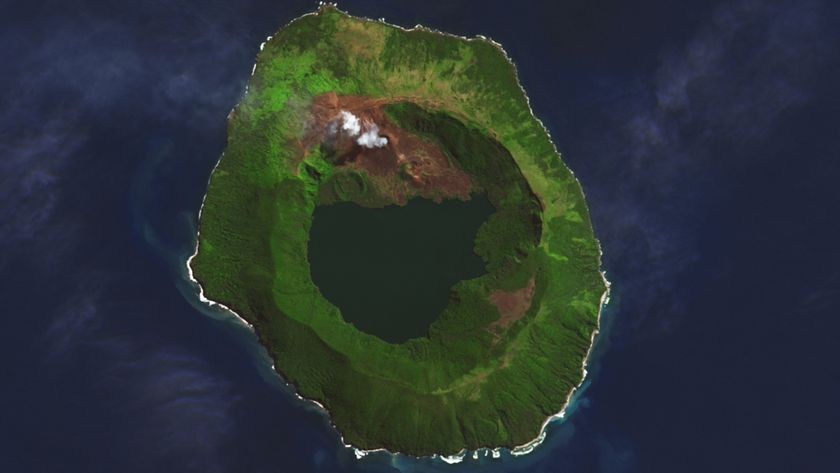
Volcanic Hot Spots Explained
When some of the Earth's continents ripped apart millions of years ago, the break-up triggered massive volcanic eruptions; but when others tore apart, there were no accompanying eruptions. New research explains why some rifts trigger volcanoes and others don't.
Scientists had thought that volcanoes always erupted along the rifts that form when the Earth's plates break apart, such as when the present-day continent of North America broke apart from what is now Europe, 54 million years ago.
But that's not always the case, it turns out. Little volcanic activity occurred 63 million years ago when the present-day sub-continent of India broke away from what is now the Seychelles, a tiny island 932 miles (1,500 kilometers) east of Africa, the new study suggests.
Here is what's happening beneath the surface:
The Earth's crust is broken into plates that are in constant motion over millions of years. Plates occasionally collide and fuse, or break apart to form new ones. Following a break, a plume of hot molten rock can rise from deep within the Earth's interior. This magma plume can trigger colossal volcanic eruptions on the planet's surface.
After America and Europe split, volcanoes erupted along the rift because of a previous thinning of the plate in the area. This gave the mantle a spot underneath the plate to rapidly melt. The melted mantle then formed magma that erupted easily through the thinned plate and onto the surface.
When India broke away from the Seychelles, however, little volcanic activity occurred along the North Indian Ocean floor, because volcanic eruptions in a neighboring area called the Gop Rift some six million years earlier exhausted the supply of magma and cooled the mantle. When the plates broke, little magma was left to erupt.
Sign up for the Live Science daily newsletter now
Get the world’s most fascinating discoveries delivered straight to your inbox.
The study scientists surveyed the rock below the North Indian Ocean floor — where India broke away from the Seychelles — and found only small amounts of basalt rock, an indicator of earlier volcanic activity. Computer simulations of events before the India-Seychelles split confirmed their theory.
"Mass extinctions, the formation of new continents and global climate change are some of the effects that can happen when plates break apart and cause super volcanic eruptions," said study co-author Jenny Collier of Imperial College London. "Excitingly, our study is helping us to see more clearly some of the factors that cause the events that have helped to shape the Earth over millions of years."
The study is detailed in the June 17 edition of the journal Nature.
- Volcanoes from Space
- Which U.S. Volcanoes Are Most Dangerous Right Now?
- 10 Wild Volcano Facts
This article was provided by OurAmazingPlanet, a sister site to LiveScience.













